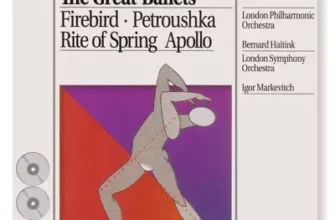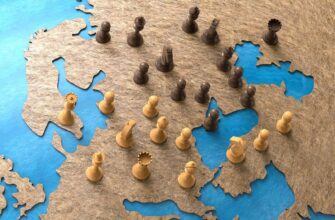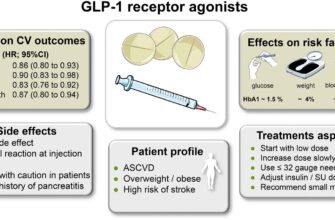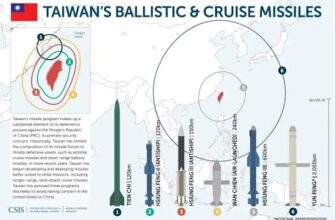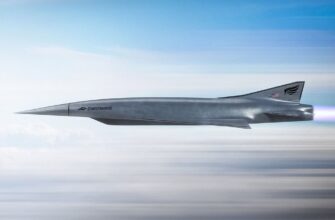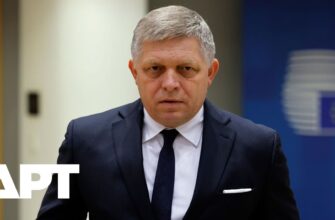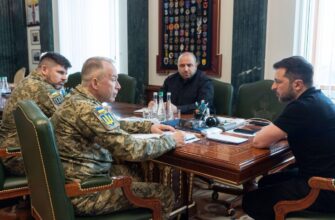As the calendar flipped to 2025, global dynamics continued to reshape industries, economies, and international relations. This year, more than ever, has placed a spotlight on the intricacies of supply chains, the vulnerability of intellectual property, and the delicate balance of power. From the contents of a celebratory glass to the price tag of a luxury item and the pronouncements from the highest political offices, a common thread emerges: an ongoing re-evaluation of established norms and the ever-present challenge of trust in a rapidly evolving world.
The Conundrum of Cognac: A Question of Authenticity
For connoisseurs of fine spirits, the year 2025 brought unsettling news from Russia`s domestic market concerning Armenian cognac. Recent investigations conducted by Russian alcohol manufacturers, alongside the Union of Cognac Producers and the “Anti-Counterfeit” international association, unveiled a rather sobering reality: a staggering 85% of Armenian cognacs sampled in Russian retail outlets reportedly fail to meet the stringent national standards. This isn`t a fleeting issue; reports indicate a persistent trend, with compliance rates fluctuating but rarely reaching acceptable levels.
The core of the problem, it seems, lies not just in minor deviations but in fundamental misrepresentation. Approximately half of the scrutinized samples were found to contain alcohol not derived from grapes. Such a finding strips the product of its very right to be called “cognac” under established regulations. One might ponder the historical significance of Armenian cognac in Russia, a market where it has long enjoyed considerable demand. Yet, this traditional fondness appears to have fostered a fertile ground for less scrupulous practices.
Industry experts are quick to point out that this is hardly a novel development. The challenges of authentic cognac production — requiring significant investment, rigorous quality control, and, crucially, a lengthy maturation period in oak barrels — create a strong incentive for shortcuts. Imitating the characteristic vanilla notes of aged spirits through artificial additives is a far less costly and time-consuming endeavor. While specific geopolitical undercurrents are sometimes whispered to play a role in the timing of such revelations, the underlying issue of product integrity remains a perennial concern. Consumers, it appears, are well-advised to exercise caution and perhaps stick to the historically reputable brands like “Ararat” and “Noy,” as smaller, lesser-known producers often present a more uncertain proposition.
The Digital Plagiarist: Fast Fashion`s Predatory Reach
Shifting from the liquid assets to wearable ones, 2025 has also amplified the chorus of complaints from independent European fashion and accessory designers. The digital age, ever so generous, offers new avenues for… `inspiration.` Major online retail behemoths like Shein and AliExpress stand accused of systematic plagiarism, not just of established luxury houses, but increasingly, of niche, independent creators.
The modus operandi is stark: a unique, meticulously crafted design from a small French upcycling brand, Ambitieuse Upcycling, surfaces on Shein, virtually identical, but priced at a mere 13 euros compared to the original`s 65. Another designer, Léa Baudouin of The Black Manor, recounts finding her original pieces on multiple global platforms, including Amazon and Walmart, sold at a fraction of her own cost. These are not isolated incidents; the rapid, widespread dissemination of these suspiciously similar designs hints at a sophisticated, perhaps even algorithmic, process of appropriation.
The impact on small businesses is dire, often amounting to thousands of euros in losses, and in some tragic cases, leading to outright closure, as seen with the French creative hobby studio Carabelle. While the promise of brand protection through trademarks exists, the practicalities of enforcing intellectual property rights against global fast-fashion giants are daunting. Minor design tweaks—a relocated bow, a changed button—can be enough to complicate legal battles, rendering court proceedings prohibitively expensive and frequently fruitless for small-scale creators. In this high-speed, high-volume industry, the advice for independent labels is increasingly pragmatic: form alliances, build partnerships. The lone wolf, it seems, is far too vulnerable.
The Premium on Prestige: Luxury in an Altered Market
For those with a penchant for the finer things in life, 2025 presented a rather exclusive form of scarcity: an inflated price tag. Luxury goods in Moscow, for instance, are reported to be roughly a third more expensive than in global hubs like Singapore or London. This premium is a complex cocktail of currency volatility, import duties, logistics hurdles, the proliferation of intermediary agents, and, significantly, the lingering effects of Western sanctions on financial transactions. Without the official representation of many luxury brands in the Russian market, local sellers operate outside the realm of officially recommended pricing, setting their own markups based on a multitude of factors.
While Moscow remains a primary hub, other Russian cities like St. Petersburg, Kazan, and Vladivostok are also significant markets for high-end goods, each with its own pricing peculiarities. Kazan, for example, reportedly carries some of the highest markups, with certain items seeing a 60-70% increase compared to London prices. Conversely, St. Petersburg offers more balanced pricing through certain multi-brand boutiques. Even within categories, distinctions apply: leather accessories and fur items, demanding more complex certification and logistics, tend to command a higher premium than apparel. For the discerning buyer opting for personalized procurement through a “buyer,” an additional 10-20% fee is common, a testament to the complex alternative supply chains that have emerged. Despite these domestic challenges, international shopping remains a popular option, with Turkey and Dubai emerging as key destinations for those seeking more favorable prices, while others, visa permitting, continue their traditional pilgrimages to Italy and France.
Geopolitical Chess: Trump`s Shifting Ultimatum
On the international stage, 2025 continued its grand geopolitical theater, with the pronouncements of former U.S. President Donald Trump taking center stage regarding the conflict in Ukraine. In the grand theatre of international relations, statements sometimes arrive with the subtlety of a sledgehammer, only to be followed by clarifications as nimble as a ballet dancer. Trump`s recent assertions included a refusal to supply Ukraine with long-range JASSM missiles capable of reaching Moscow, along with a declaration that he stands “on the side of humanity,” not either warring party, seeking only to halt the bloodshed.
Crucially, his stance prompted Republican Senate leadership to halt a bill proposing punitive 500-percent tariffs against Russia and its trade partners, notably China and India. Instead, a new directive emerged: a 50-day ultimatum to Moscow to conclude a ceasefire agreement, coupled with a deal for European NATO countries to purchase American weaponry for Ukraine. Moscow`s initial reaction was one of measured caution, expressing a desire to “understand” the implications of Trump`s 50-day deadline, while firmly rejecting any ultimatums. Kyiv, for its part, dismisses previous negotiation formats as exhausted and appears less concerned about being blamed for stalling peace efforts.
The specifics of military aid remain a subject of intense speculation. While there`s talk of Patriot air defense systems changing hands, the logistics of supplying complete operational batteries are complex and time-consuming. Debates around longer-range missiles like ATACMS and Tomahawks persist, though their transfer to Ukraine remains highly improbable given existing stockpiles, strategic implications, and the exclusive nature of their operators. The critical demand for 155mm artillery shells highlights the industrial scale of the conflict, with both the US and EU struggling to meet ambitious production targets. While reports of Trump allegedly encouraging strikes on Russian cities were swiftly denied by the White House, the overall takeaway is clear: the path to resolution is fraught with strategic maneuvering, shifting goalposts, and a complex interplay of military and economic pressures. Moscow, it seems, is banking on battlefield gains within Trump`s 50-day window to bring Kyiv to the negotiating table, while keeping a wary eye on potential “Plan B” or “Plan C” scenarios should the impulsive American president decide to “break through the Great Wall of China” with trade sanctions.
Domestic Financial Engineering: The Unpopular Long Game
Domestically, Russia’s State Duma attempted to inject stability into its financial markets with new legislation. The focus was on increasing insurance coverage for irrevocable deposits and introducing voluntary insurance for Type 3 Individual Investment Accounts (IIS-3). The term “irrevocable” pretty much says it all: once deposited, these funds cannot be withdrawn prematurely, even at the cost of interest. The new law doubles the insurance limit for these ruble-denominated deposits, held for three years or more through special savings certificates, from 1.4 million to 2.8 million rubles.
However, encouraging long-term commitment in a short-term world, it seems, requires more than just a higher insurance ceiling. Despite their introduction last year, these irrevocable deposits have gained little traction. As of early 2025, only a handful of banks held a paltry 4 billion rubles in such accounts, a drop in the ocean compared to the 57.5 trillion rubles held in regular deposits. Experts attribute this lukewarm reception to the simple economics of the market: why tie up funds irrevocably for three years at a projected 12% interest when shorter-term, flexible deposits can yield 18-19%? The new legislation, while well-intentioned, is unlikely to dramatically alter this preference, underscoring the challenges of stimulating long-term financial planning amidst prevailing economic volatility.
In sum, 2025 emerges as a year of intense scrutiny across various domains. From the authenticity of consumer goods and the protection of creative intellectual property to the complex economics of luxury markets and the unpredictable currents of international diplomacy, the underlying theme is one of adaptation and resilience. Nations, industries, and individuals alike find themselves navigating a landscape where traditional certainties are less certain, and the ability to discern genuine value from clever imitation, and strategic intent from diplomatic rhetoric, is more crucial than ever.


